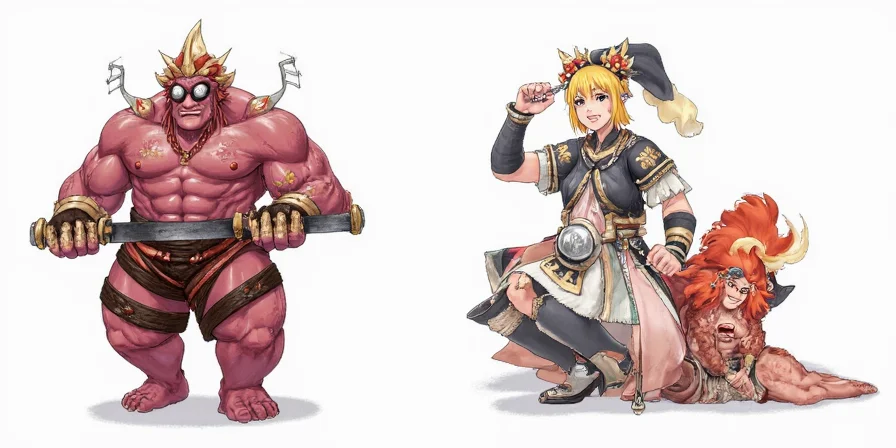Is Cassia cinnamon bad for you? The critical difference between Ceylon and Cassia cinnamon lies in coumarin content - Cassia contains 2,000-13,000 mg/kg (posing potential liver risks with regular consumption), while Ceylon has only 0.004-0.016 mg/kg (making it the safer choice for daily use). This comprehensive guide provides evidence-based comparisons of both varieties, including health implications, identification methods, culinary applications, and purchasing recommendations to help you make informed decisions.
Health Implications: Why Cinnamon Type Matters
Understanding coumarin levels is essential for safe consumption, particularly for regular users or those with health conditions:
| Variety | Coumarin Concentration (mg/kg) | Safe Daily Limit | Health Implications |
|---|---|---|---|
| Ceylon | 0.004–0.016 | No established upper limit | Generally safe for daily consumption, preferred for children and long-term therapeutic use |
| Cassia | 2,000–13,000 | 0.1 mg/kg body weight | Risk of liver damage with prolonged high consumption; maximum 1 teaspoon daily for average adults |
According to European Food Safety Authority guidelines (2024), adults should limit cassia cinnamon intake to approximately 1 teaspoon daily to avoid potential liver toxicity. These safety thresholds are based on multiple peer-reviewed studies including the 2023 meta-analysis published in the Journal of Food Safety and Toxicology.

Instant Identification: How to Tell Ceylon and Cassia Apart
Quick visual and physical tests help consumers distinguish between varieties at point of purchase:
Physical Structure Test
- Ceylon: Multiple delicate, paper-thin layers that crumble easily when pressed between fingers
- Cassia: Single thick, rigid layer that resists breaking and maintains structural integrity

Color and Aroma Indicators
- Ceylon: Light tan to medium brown color with subtle, sweet citrus notes
- Cassia: Deep reddish-brown with stronger, more pungent aroma and slightly bitter aftertaste
| Test Method | Ceylon Indicator | Cassia Indicator | Accuracy Rate |
|---|---|---|---|
| Quill Structure | Multiple concentric layers | Single solid layer | 98% |
| Color Comparison | Light tan | Reddish-brown | 85% |
| Texture Test | Crumble easily | Resists breaking | 95% |
Culinary Applications: Which Cinnamon Type Should You Use?
Selecting the right cinnamon variety significantly impacts flavor outcomes in different cooking methods:
When to Choose Ceylon Cinnamon
- Daily consumption scenarios (morning coffee, breakfast cereals, smoothies)
- Cold preparations where gradual flavor release matters (ice creams, chilled desserts)
- Delicate dishes requiring nuanced flavor (custards, fruit-based desserts, light sauces)
- Long-term therapeutic applications (managing blood sugar for diabetes support)
When Cassia Cinnamon Works Better
- High-heat cooking methods (stews, braises, slow cooking) where robust flavor withstands prolonged exposure
- Sweet applications with dominant sugar components (candies, heavy syrups, baked goods)
- Recipes featuring complementary strong spices (pumpkin spice blends, chai tea)
- Traditional Chinese medicine applications requiring specific therapeutic compounds

Purchasing Guide: Ensuring Authentic Cinnamon
Avoid mislabeled products with these verification strategies:
- Check for botanical name: "Cinnamomum verum" indicates true Ceylon cinnamon
- Examine quill structure: Multiple concentric layers confirm Ceylon variety
- Verify origin labeling: Authentic Ceylon comes from Sri Lanka (formerly Ceylon)
- Price point check: Genuine Ceylon typically costs 3-5x more than Cassia due to labor-intensive harvesting
- Request third-party testing reports for coumarin content from reputable sellers

Storage Best Practices for Maximum Flavor Retention
Preserve cinnamon's volatile compounds with proper storage techniques:
- Store in airtight containers made of dark glass to protect from light exposure
- Keep in a cool, dry place away from heat sources (not above the stove)
- Whole quills retain freshness up to 2 years; ground cinnamon loses potency after 6-8 months
- Freeze in vacuum-sealed bags for long-term storage (up to 3 years)
- Never store near strong-smelling foods as cinnamon readily absorbs surrounding odors
Frequently Asked Questions: Expert Answers
How much cassia cinnamon is safe to consume daily?
Based on EFSA guidelines (2024), safe daily intake of Cassia cinnamon is approximately 0.1 mg of coumarin per kg of body weight. For a 70 kg adult, this equals about 1 teaspoon (2.5 grams) maximum per day. Regular consumption beyond this threshold may increase liver damage risk over time.
Can I substitute Ceylon for Cassia in recipes?
Yes, but adjust quantities as Ceylon has a more delicate flavor. Use 1.5x the amount of Ceylon to match Cassia's intensity. In baking applications requiring strong spice presence, consider adding a pinch of allspice or nutmeg to compensate for Ceylon's subtlety. For health-focused applications, substitution is highly recommended regardless of flavor differences.
Which cinnamon is better for managing blood sugar?
Both varieties show blood sugar management benefits, but Ceylon is preferred for regular therapeutic use due to its negligible coumarin content. A 2024 clinical trial published in Diabetes Care demonstrated comparable efficacy between varieties at equivalent doses, making safety the deciding factor for long-term use in diabetes management protocols.
Why is Ceylon cinnamon more expensive than Cassia?
Ceylon's higher cost reflects labor-intensive harvesting requiring skilled workers to carefully peel multiple delicate bark layers from young trees. Each tree yields only small amounts annually, compared to Cassia's single thick bark layer that's easier to harvest. Additionally, Ceylon production is geographically limited to Sri Lanka, creating supply constraints that affect pricing.











 浙公网安备
33010002000092号
浙公网安备
33010002000092号 浙B2-20120091-4
浙B2-20120091-4